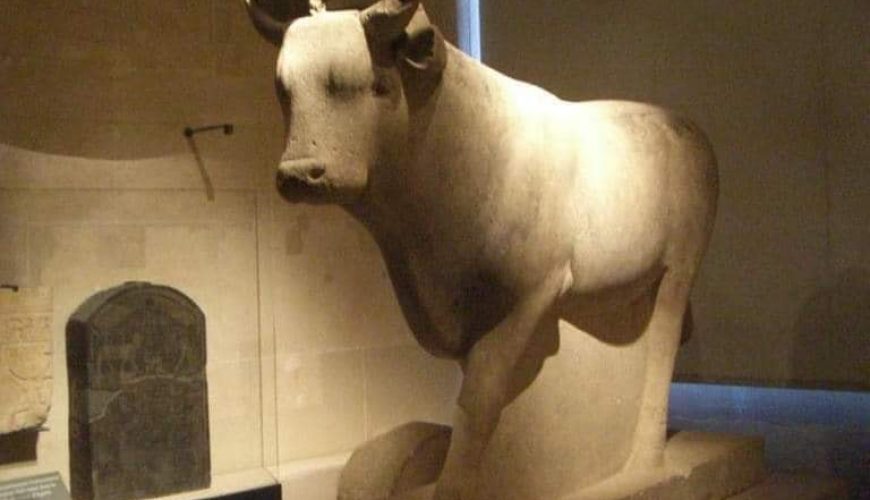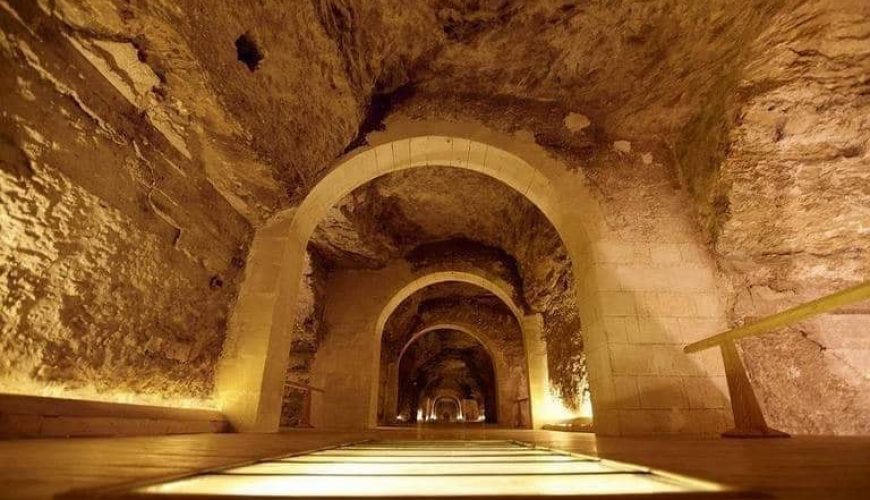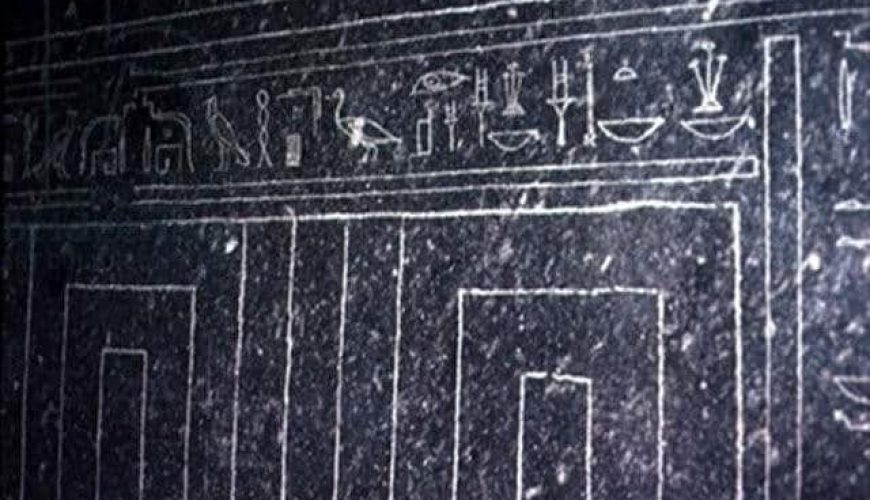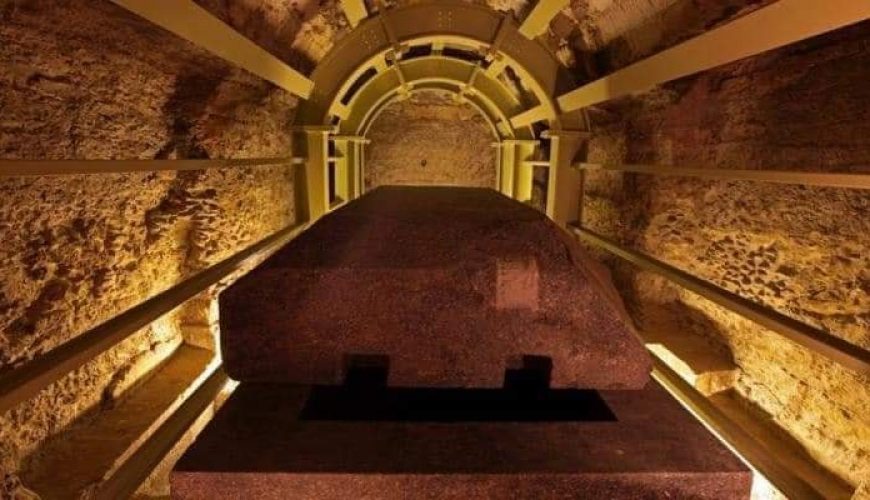Egypt Magic [1523]
Serapeum Temple
Saqqara area in Giza:
The Serapeum of Saqqara consists of a group of tunnels and catacombs with a length of 400 meters carved into the heart of the rock of the Saqqara plateau, and it begins with a long corridor that leads to stairs.
The Serapeum temple in the Saqqara desert in Egypt is a puzzle for scholars and specialists in Egyptology, whether due to the presence of its coffins in these large numbers, up to 26, or made of excellent granite, and of such a huge size, as well as its long tunnels and tunnels that exceed 400 meters, and unique engineering Used found in the third century BC, which is a great scientific and engineering miracles.
The idea of the Serapeum:
Serapeum is a name given to every temple or religious structure dedicated to the worship of the monotheistic god Serapis, which is cred worship in Egypt in the “Greek” Hellenistic era, which combines two of the gods of ancient Egypt, namely Osiris and Apis, and the aim is to make citizens of Greek origins and others of origins Egyptians participate in the worship of the Hamitic deity, which combines the attributes of the Greek deities “Zeus and Hades” with the characteristics of the Egyptian deities “Osiris and Apis.”
There are many Serapeum in Egypt and Italy, including one in Saqqara and another in Alexandria, dedicated to the god Serapis. There is also Serapeum in ancient Rome, and in the province of the Atacama, which is one of the temples dedicated to the Egyptian gods Isis and Osiris, and another Serapeum in the Campo Marzio area in Rome, but Serapeum Saqqara is the most important and complex of its rare engineering.
Sarabium Saqqara is the most important tomb built in Memphis. It is located in the cemetery complex of the calf Apis, which was sacred in the period of the ancient Egyptian dynasties, and symbolizes fertility and worshipped in Memphis. The ancient Egyptians considered that the spirit of the god “Ptah” is embodied in it. Sarabium means the seat or shrine of the god Serapis, a Greek name related to the Greek name “Serapis” for the ancient Egyptian god “love” meaning “the bull Apis”, and Serapis is a compound word that combines the two gods “Osir” and “love”, and was discovered by Egyptologist Auguste Mariette in 1848.
Description of the Serapeum and its bewildering riddles:
The Serapeum of Saqqara consists of a group of tunnels and catacombs with a length of 400 meters, carved in the heart of the rock of the Saqqara plateau. It begins with a long corridor that leads to staircases consisting of large terraces, at the end of which is a small door that opens onto the main corridor, one of which is 136 meters long, with a wooden floor, and the other Glass, to see the original land of the corridors, and on either side of it are 24 domed burial chambers carved into the rock. These rooms do not face each other but rather are dug in exchange to not put pressure on the clay soil that they are carved on, and the cemetery murals are decorated with ancient Egyptian inscriptions. Each burial chamber contains A huge granite sarcophagus of various colours, showing various ancient Egyptian inscriptions.
The Serapeum tunnels have one door, which is considered the entrance and exit, on the same straight line. Even with the sun’s presence, the vision inside the tunnels is very dark, and there is no trace of the places of torches on the walls of the tunnel, which is a mystery that prompted some to ask whether there was electricity; in ancient Egypt?
Also, the tunnels are not dug in the sand, but they are engraved in the rocks of Saqqara, which requires an incredible, double effort that was carried out using the human hand alone.
The coffins are another of the mysteries of the Serapeum in terms of their number and enormous size, as there are 26 coffins made of fine granite. The bodyweight of the coffin is 70 tons, and its cover weighs about 30 tons; and the height of the coffin ranges between 3 and 4 meters and reaches a width of 2.5 meters. Its length is 3 meters.
The mystery in the collection of coffins is not only in their number or bulk but also in the reason for their manufacture, as all were found empty and closed except for one sarcophagus only, which denies the claims of the archaeologist Mariette, the discoverer of the tomb, that they are coffins to bury the body of the calf Apis, as no coffin was found. On which mummy or body was the body of the calf Apis, and the question remains confusing why these coffins were made?
The coffins are all made of high-strength rocks such as red and black granite, which are rocks that can only be dealt with by diamond cutters, which raises a group of questions: How did the ancient Egyptian cut these huge, tough rocks and polish them in this way? Are shovels and primitive road machines suitable for such work? Or used machines and equipment very advanced compared to this time? And how did you put those giant coffins inside the tunnel, which has one very narrow entrance? Also, all the inner and outer corners of the coffin are 90 degrees completely precisely.
Thus, the temple of Serapeum, Saqqara, its tunnels and its passages, in addition to its coffins, remain a great mystery that baffles scholars and specialists in the history and civilization of ancient Egypt.
The Serapeum of Saqqara consists of a group of tunnels and catacombs with a length of 400 meters carved into the heart of the rock of the Saqqara plateau, and it begins with a long corridor that leads to stairs.
The Serapeum temple in the Saqqara desert in Egypt is a puzzle for scholars and specialists in Egyptology, whether due to the presence of its coffins in these large numbers, up to 26, or made of excellent granite, and of such a huge size, as well as its long tunnels and tunnels that exceed 400 meters, and unique engineering Used found in the third century BC, which is a great scientific and engineering miracles.
The idea of the Serapeum:
Serapeum is a name given to every temple or religious structure dedicated to the worship of the monotheistic god Serapis, which is cred worship in Egypt in the “Greek” Hellenistic era, which combines two of the gods of ancient Egypt, namely Osiris and Apis, and the aim is to make citizens of Greek origins and others of origins Egyptians participate in the worship of the Hamitic deity, which combines the attributes of the Greek deities “Zeus and Hades” with the characteristics of the Egyptian deities “Osiris and Apis.”
There are many Serapeum in Egypt and Italy, including one in Saqqara and another in Alexandria, dedicated to the god Serapis. There is also Serapeum in ancient Rome, and in the province of the Atacama, which is one of the temples dedicated to the Egyptian god’s Isis and Osiris, and another Serapeum in the Campo Marzio area in Rome, but Serapeum Saqqara is the most important and complex of its rare engineering.
Sarabium Saqqara is the most important tomb built in Memphis. It is located in the cemetery complex of the calf Apis, which was sacred in the period of the ancient Egyptian dynasties, and symbolizes fertility and worshipped in Memphis. The ancient Egyptians considered that the spirit of the god “Ptah” is embodied in it. Sarabium means the seat or shrine of the god Serapis, a Greek name related to the Greek name “Serapis” for the ancient Egyptian god “love” meaning “the bull Apis”, and Serapis is a compound word that combines the two gods “Osir” and “love”, and was discovered by Egyptologist Auguste Mariette in 1848.
Description of the Serapeum and its bewildering riddles:
The Serapeum of Saqqara consists of a group of tunnels and catacombs with a length of 400 meters, carved in the heart of the rock of the Saqqara plateau. It begins with a long corridor that leads to staircases consisting of large terraces, at the end of which is a small door that opens onto the main corridor, one of which is 136 meters long, with a wooden floor, and the other Glass, to see the original land of the corridors, and on either side of it are 24 domed burial chambers carved into the rock. These rooms do not face each other but rather are dug in exchange to not put pressure on the clay soil that they are carved on, and the cemetery murals are decorated with ancient Egyptian inscriptions. Each burial chamber contains A huge granite sarcophagus of various colours, showing various ancient Egyptian inscriptions.
The Serapeum tunnels have one door, which is considered the entrance and exit, on the same straight line. Even with the sun’s presence, the vision inside the tunnels is very dark, and there is no trace of the places of torches on the walls of the tunnel, which is a mystery that prompted some to ask whether there was electricity; in ancient Egypt?
Also, the tunnels are not dug in the sand, but they are engraved in the rocks of Saqqara, which requires an incredible, double effort that was carried out using the human hand alone.
The coffins are another of the mysteries of the Serapeum in terms of their number and enormous size, as there are 26 coffins made of fine granite. The bodyweight of the coffin is 70 tons, and its cover weighs about 30 tons; and the height of the coffin ranges between 3 and 4 meters and reaches a width of 2.5 meters. Its length is 3 meters.
The mystery in the collection of coffins is not only in their number or bulk but also in the reason for their manufacture, as all were found empty and closed except for one sarcophagus only, which denies the claims of the archaeologist Mariette, the discoverer of the tomb, that they are coffins to bury the body of the calf Apis, as no coffin was found. On which mummy or body was the body of the calf Apis, and the question remains confusing why these coffins were made?
The coffins are all made of high-strength rocks such as red and black granite, which are rocks that can only be dealt with by diamond cutters, which raises a group of questions: How did the ancient Egyptian cut these huge, tough rocks and polish them in this way? Are shovels and primitive road machines suitable for such work? Or used machines and equipment very advanced compared to this time? And how did you put those giant coffins inside the tunnel, which has one very narrow entrance? Also, all the inner and outer corners of the coffin are 90 degrees completely precisely.
Thus, the temple of Serapeum, Saqqara, its tunnels and its passages, in addition to its coffins, remain a great mystery that baffles scholars and specialists in the history and civilization of ancient Egypt.





Comment (0)